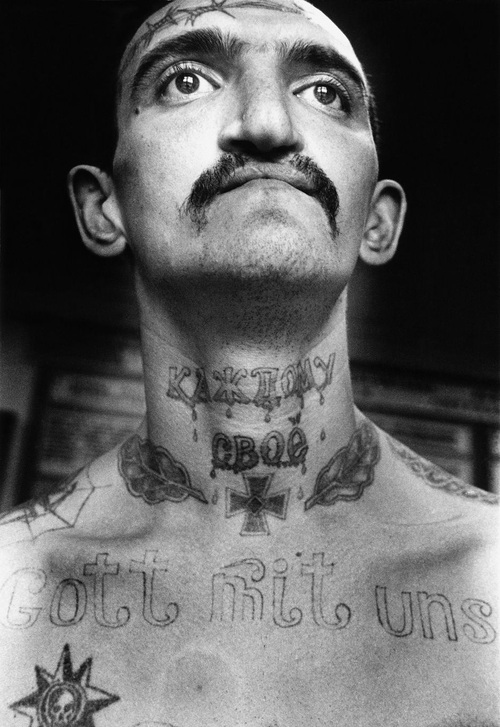Danzig Baldayev worked in a Leningrad prison for 33 years and managed to get an insight into the criminal world that even the KGB took interest in his work. During his time an an ethnographer, he illustrated enough criminal tattoos to fill three books. The volumes entitled Russian Criminal Tattoo Encyclopaedia contained accompanying photographs from Sergei Vasiliev.
In prisons the world over, tattoos are a form of “language”, often telling other inmates the violent history of the wearer, and it was no different in Russian prisons. The tattoos that Baldayev and Vasiliev encountered were cloaked in hidden meanings and very smybolic to the wearer, a curriculum vitae if you will. These tattoos had to be earned the hard way, and a criminal without a tattoo had no status in prison, while anyone bearing a tattoo that they didn’t work for had it forcibly removed. Here’s a list of some Russian prison tattoos and what they meant:
- Cat – A pickpocket. A cat with a bowtie meant that the prisoner had broken the thieves’ code.
- Eyes – If these were on the upper part of the body, it meant the wearer was watchful. If they were on the buttocks, it meant something completely different.
- Stars – If these were on the knees, it meant the prison bowed to no authority.
- Bat – This was someone who committed criminal acts in the night.
- Joker – Someone who loved to gamble.
- Churches – The number of dome towers depicted either number of terms the prisoner had served or number of years of the sentence.
Have a look at some of Vasiliev’s Russian prison tattoo photographs after the jump.
Russian Criminal Tattoo Encyclopaedia volumes I, II, and III are all available for purchase on Amazon.











